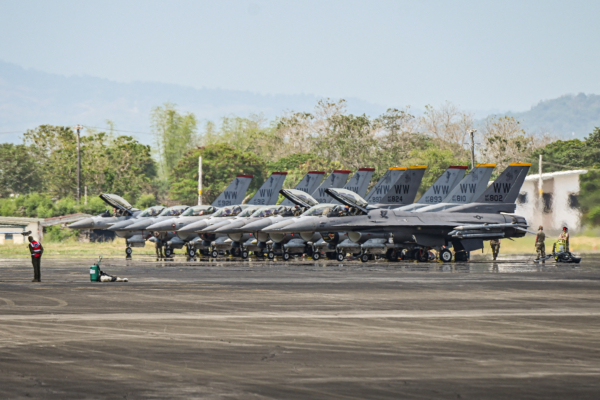The Pentagon awarded a $32 million contract this month to upgrade a critical air force base in the Philippines. Analysts believe this move is essential for enhancing the defense capabilities of the US and the Philippines and countering Chinese aggression.
Under the Pacific Deterrence Initiative (PDI), the United States is investing in partner nations in the Pacific region to build critical infrastructure to counter China. As part of this initiative, the Basa Air Base in the Philippines will see the construction of a 625,000 square foot runway that can accommodate up to 20 aircraft. The base’s infrastructure will also be upgraded to support joint training activities between US and Filipino forces.
The current phase of airport upgrades is expected to be completed by July 2026.
Located approximately 100 kilometers from Manila, the Basa Air Base has historically been the home of the Philippines’ FA-50PH fighter squadron. According to the Enhanced Defense Cooperation Agreement (EDCA) signed by the US and the Philippines in 2014, the Basa Air Base is one of the bases where US forces are allowed to operate.
Abdul Rahman Yaacob, a research fellow at the Lowy Institute’s Southeast Asia Program, stated that the Basa base currently lacks the necessary equipment to accommodate and maintain more fighter jets being acquired by the Philippines.
In July of this year, Philippines Armed Forces Commander Romeo Brawner Jr. stated that the Philippines government has approved the purchase of multi-role fighters because the FA-50 fighter jets are “not enough to defend the country.”
Yaacob mentioned that if the Basa Air Base is equipped with sufficient infrastructure and equipment, it could support and sustain joint actions by the Philippines and its allies in the northern end of the South China Sea, including surveillance and reconnaissance operations.
Facing the South China Sea and situated opposite Hainan Island in China, Yaacob suggested that the Basa Air Base could play a role in any tensions or conflicts between the US and China due to its geographical location.
Bradley Bowman, Senior Director at the Center on Military and Political Power of the Foundation for Defense of Democracies (FDD), also stated that modernizing and expanding infrastructure in critical bases like Basa would enable the US and its regional allies to more effectively deter aggression.
“The ultimate goal is to prevent Chinese aggression in the region. This is not a theoretical issue,” Bowman said. “Beijing demonstrates every day its belief in ‘might makes right’ diplomacy, which ignores the sovereignty and interests of neighboring countries.”
On Monday, the Philippines reported that two Chinese aircraft made dangerous maneuvers and dropped flares while a Philippine military plane was on a routine patrol over the disputed Scarborough Shoal (known as Huangyan Island by China). Filipino Defense Minister Gilberto Teodoro expressed hope that China would abide by international law.
Teodoro told reporters, “They will stick to their narrative, but we know their narrative does not have any international support; all they have is brute force and power.”
China argued that its actions were lawful responses to Manila’s “illegal” intrusion into its airspace.
Scarborough Shoal is one of the most contested areas in the South China Sea region. The Philippines and China frequently clash over sovereignty and fishing rights in the shoal.
The shoal is approximately 300 kilometers from the Basa Air Base and lies within the Philippines’ exclusive economic zone, around 900 kilometers from China.
In 2023, the Philippines expanded US military base access permissions, allowing the US to establish four additional bases in strategic areas under the EDCA, enhancing US military presence in the region and completing construction projects at existing five bases.
These projects include humanitarian aid warehouses, runway upgrades, and command facilities.
(Parts of this article were referenced from reports by Voice of America and USNI News)

